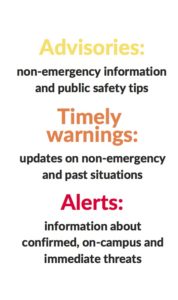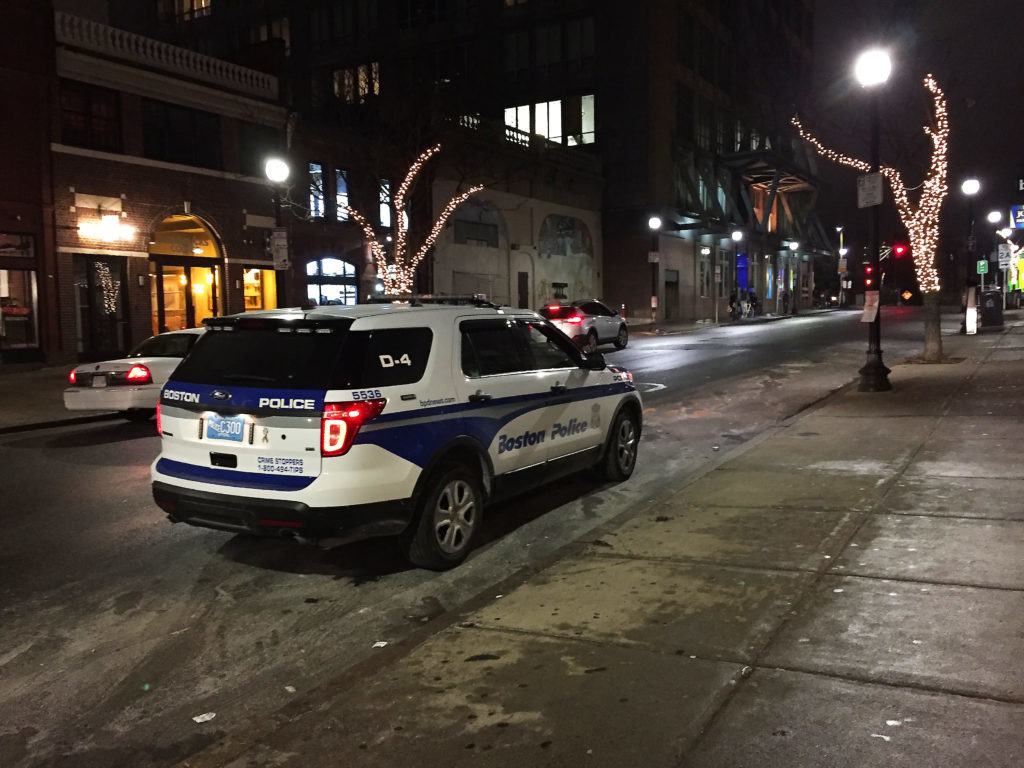NUPD creates new advisory notification system
February 15, 2018
Northeastern police introduced a new opt-in advisory system in December that provides students with more information about non-emergency situations than the school’s standard emergency alert method.
Todd Kaplan, the emergency operations manager and associate director of public safety for the Northeastern University Police Department, or NUPD, said the new system had more than 300 participants by mid-January. The system, called NUPD Advisory, is designed to help NUPD communicate with students when situations occur that do not fall under the strict guidelines of an emergency. The advisory is meant to supplement NU Alert.
“It doesn’t take away from NU Alert or anything like that. You will always get NU Alert [messages] as long as you are affiliated with Northeastern University,” Kaplan said. “NUPD Advisories is now this opt-in process where you can opt in to get these additional advisories when we’re able to send something.”
Kaplan said advisory notifications from the opt-in program could include information about crime patterns, public awareness tips or safety information about big events near campus, like the Boston Marathon.
The advisory system is the third notification system NUPD operates. Kaplan said the department also sends out alerts, which are the emergency notifications students receive by text, and timely warnings, which include emails with information or updates about recent non-emergency situations.
“If something’s going on in the city that we can share with people, or a large event [is] happening in the city, we might send out an NUPD Advisory,” Kaplan said. “That’s why we call them the titles that they are: alert, warning and advisory — an advisory is just informing people and making people aware of things that might be helpful.”

Kaplan said because of Federal Communication Commission regulations and the Clery Act, a federal law governing college and university safety standards, NUPD has a narrow definition of what situations warrant emergency notifications. To send an alert, a situation must pass three tests: it must be confirmed, on-campus and immediate.
Not everything passes, as the Northeastern community and NUPD both realized when someone called in a bomb threat to Shillman Hall in December 2017. The police department’s Twitter sent out a general statement, but many students didn’t see it, including fourth-year history major Kayla Lavelle.
Lavelle said she didn’t know anything was going on until she saw a post in the NU Meme Collective, a secret Facebook group for Northeastern students to share jokes about the university. Another student had posted two photos: the NUPD tweet about the incident side-by-side with an alert sent to nearby Wentworth Institute of Technology students, which had more detailed information about a potential bomb threat.
“Northeastern University is in the midst of an active bomb threat,” the Dec. 2, 2017 Wentworth alert read. “Please avoid the area until further notice.”
NUPD’s tweet asked students “to stay clear of the hall until the incident is over,” but said nothing about a bomb threat. Lavelle said she has been frustrated with the alert system before, who said she feels like NUPD never sends out alerts about situations near her home in Roxbury.
“This isn’t the first time I’ve noticed the alert system fail students on campus,” Lavelle said. “I don’t know exactly what their policies are and I don’t want to make judgments about NUPD, I just want to feel safe on campus.”
Alice Young, a 2017 computer science and interactive design graduate, was also disappointed by the Wentworth alert problem, despite no longer being on campus. But she said she never really took the alerts seriously until then. Now, the new system feels like a good addition.
“They never sent out an alert that made me feel like I had to change my behavior,” Young said. “Up until the Wentworth thing, I wasn’t under the impression that if there was an emergency situation, that the [system] in place would be ineffective. I only started to question that after the Wentworth thing.”
Kaplan said often NUPD cannot alert students with an emergency notification because the crime is not credible or confirmed, which is what happened with the bomb threat. Sometimes, a situation is happening near students but out of NUPD’s jurisdiction, such as in the Mission Hill or Roxbury communities, which also disqualifies it from NU Alert.
That’s where advisories come in — students can receive a message when NUPD can’t send an alert.
“If something happens on Mission Hill and we become aware of it, it’s not our jurisdiction so we can’t confirm what’s going on in that area, but we can send out an advisory,” Kaplan said. “It would have information on, hopefully, the incident and maybe even where to find more information.”
Lavelle signed up for the new system Jan. 31, and said she appreciates that NUPD is taking student feedback. She said she wants to see more awareness of sexual assault and harassment in their advisories.
“I really think the pilot system is going to be a good step,” Lavelle said. “It seems like they really do care what students have to say about that.”
Kaplan said moving forward, the police department will continue to find new ways to keep students safe on and off campus. Some of their goals include improving communication with other campuses about potential dangers, using voice messages to alert students in public buildings or when they are in class and notifying specific locations based on proximity to a situation.
“That’s really my job, just trying to add more and more redundancy for communication to make sure that if a message needs to get out, it gets out in some way,” Kaplan said. “That’s where we’re heading — trying to get as many different methods of communication as possible.”
To sign up for the opt-in advisory system, students can text “nupdadvisory” to 226787.







